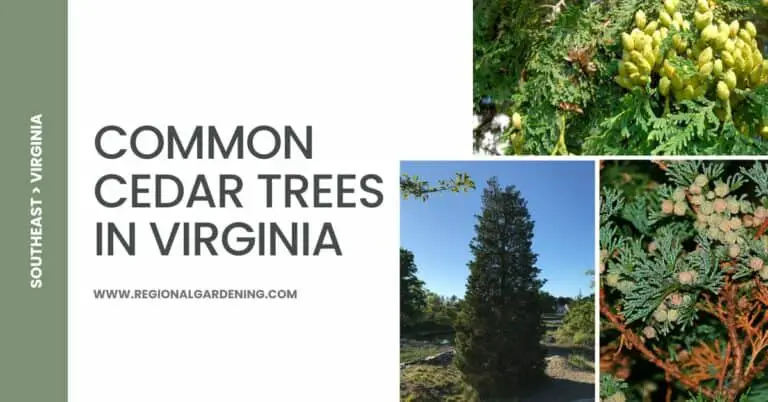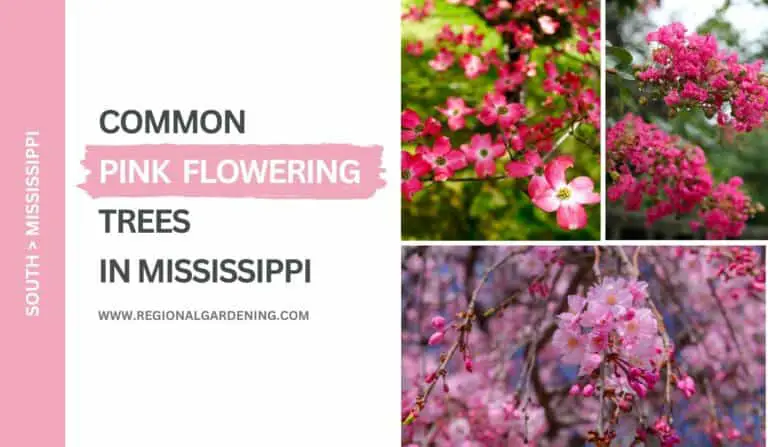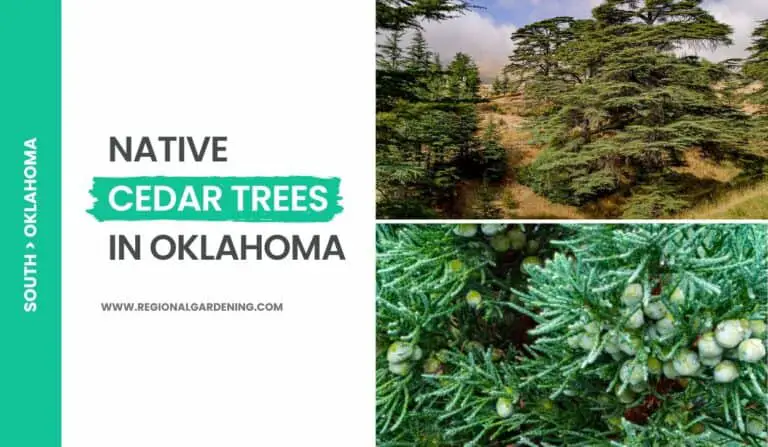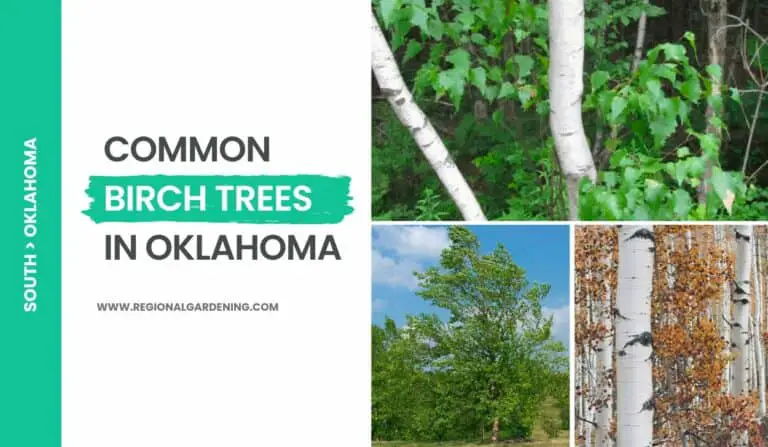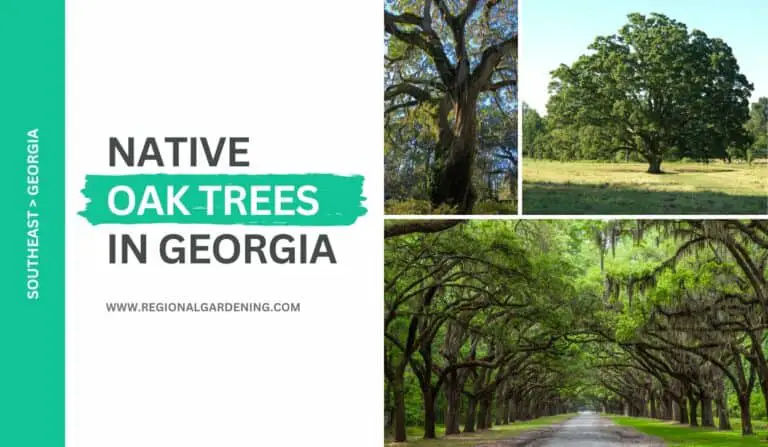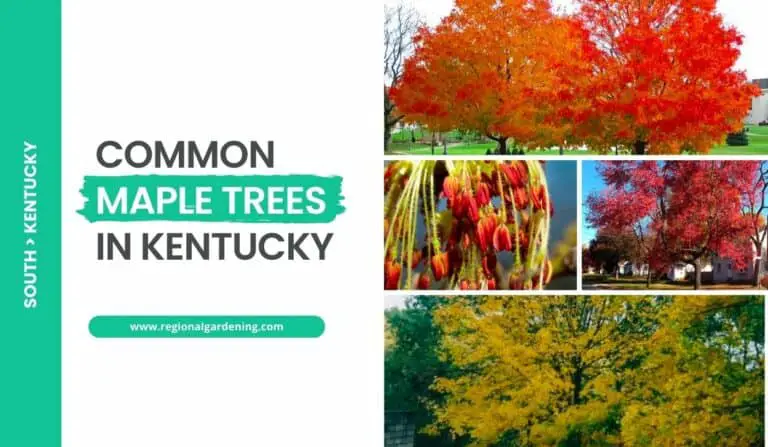6 Purple Trees In Virginia (Pictures & Identification)
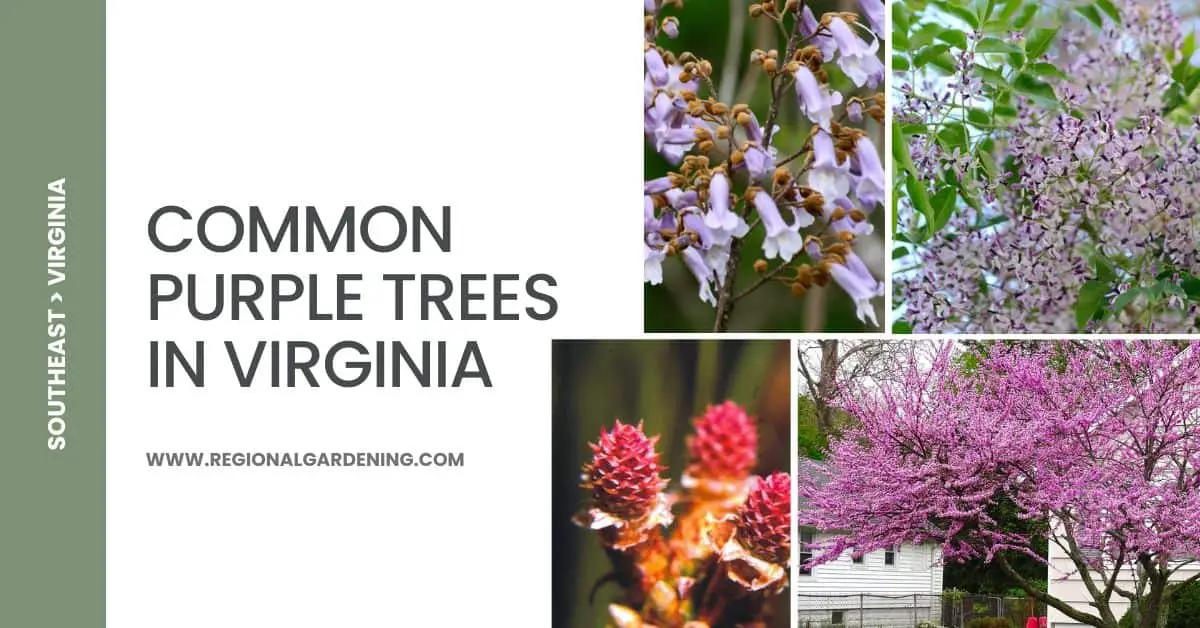
Virginia is blessed with a variety of trees in different shades of color. And, if you are fascinated by the purple flowers of eastern Redbud, be ready to get fascinated again.
In this article, we are going to take a closer look at quite a few purple trees in Virginia that have purple shades in either flowers, fruits, or bark.
So, let’s get started.
1. Eastern Redbud
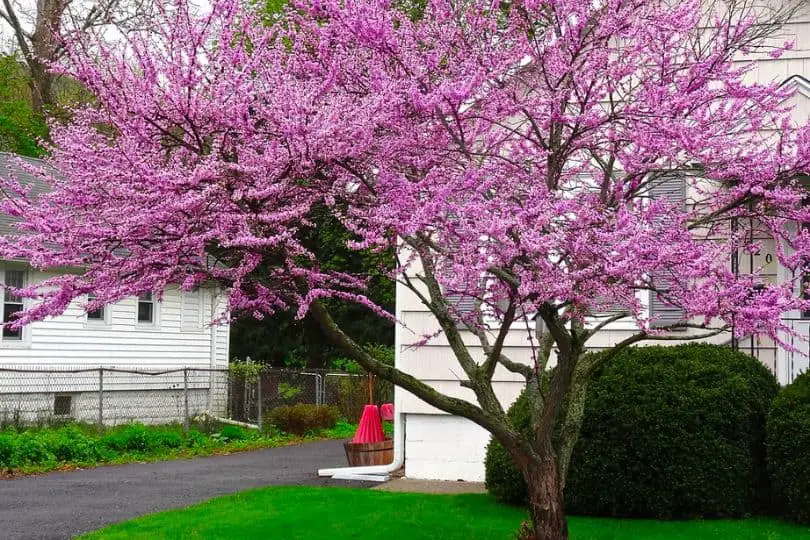
Eastern Redbud is the gold standard of purple trees in Virginia. If you drive along the countryside, all those majestic purple trees are redbud. And in fact, no other trees in this list can come close to the beauty of Eastern redbud.
It is also one of the shortest purple trees in Virginia, with a maximum attainable height of 30 ft along with a 6 to 10-inch diameter trunk.
They have heart-shaped leaves that are simple and alternate with smooth edges. Before the leaves emerge in the early spring, bright pink to purple, half-inch-long blossoms that resemble pea flowers develop in clusters along the twigs and short branches. When the tree is blooming, the entire landscape is a sight to watch.
Although heavy, hard, and richly colored in dark brown, the wood of the Royal Paulownia has little to no commercial. Although some birds and mammals may consume its seeds, it is primarily grown as a decorative component of small landscapes. The bark of this plant was traditionally used to treat dysentery.
2. Royal Paulownia
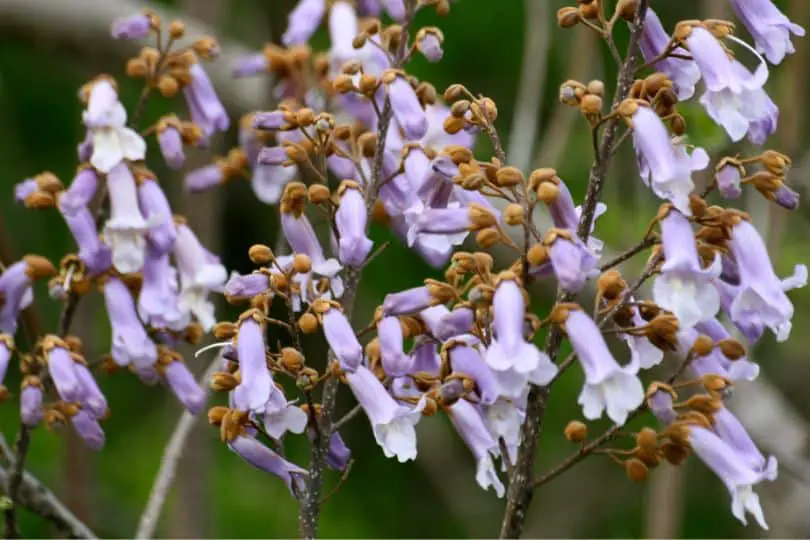
Royal Paulownia is native to East Asia and China and was brought to the US a few hundred years back as an ornamental tree. It is a relatively short tree that can reach up to 50ft in height with a diameter of 1-2 ft.
It is well known for tolerating a wide range of soil circumstances, especially in arid regions. the leaves of this plant are opposite, straightforward, heart-shaped, and velvety below. They can range in length from 5 to 12 inches.
Before the leaves emerge in the spring, it produces enormous clusters of 1 1/2 to 2 inch long, purple, tube-shaped flowers that are quite fragrant. One to one and a half inches in diameter, its oval capsules contain thousands of tiny, winged seeds that start wide and green before turning brown and dry.
Its twigs are strong, light brown, and have numerous pores with little buds and rounded leaf scars. Its bark is thin, grayish-brown, and has shallow cracks.
Royal Paulownia is considered to be invasive in the US. Because of their ability to shoot from the roots and thousands of seeds, they are quite hard to control and can displace native species very quickly. If you are interested in growing this tree, do control its growth periodically by pruning.
3. Loblolly Pine
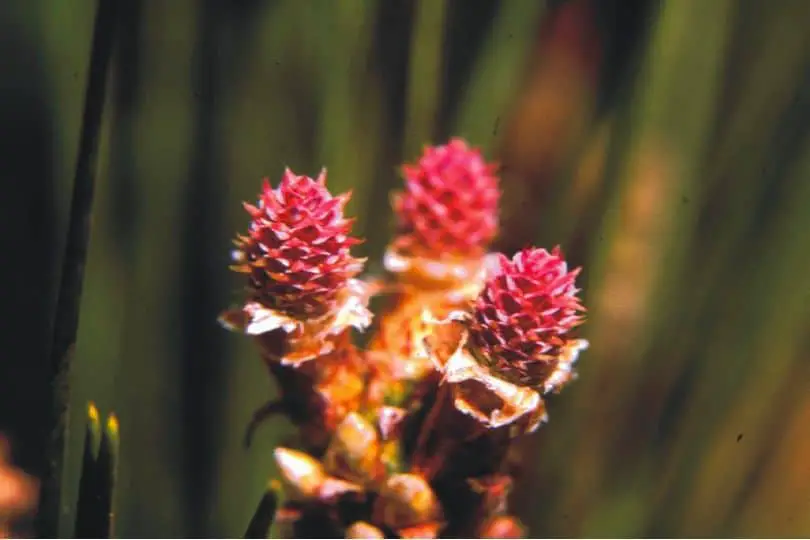
If you live in Virginia and have done any kind of woodwork in your home, then 9 out of 10 times loblolly Pine is the one that you have used. It is the most important commercial timber in Southeastern states including Virginia.
It is a tall tree with an average height of 120ft and 2-3ft diameter. Its lower branches tend to self-prune, while its higher branches grow upward and are accompanied by an oval and somewhat open crown.
Female flowers are tiny cones of yellow to purple color, while the male counterpart is red or yellow, are cylindrical, and grow in clusters at the ends of the branches.
This tree can survive in a wide range of conditions, but it does especially well in ancient fields with sandy soils and a shallow water table. Besides these well-drained areas, it can also be found flourishing at the fringes of marshes.
As it ages, the tree’s bark darkens from a reddish-brown to a brown with shallow cracks splitting it into plates that are broad and flat on top and coated in thin scales. The buds on the twigs are broadly ovoid and have a light hue and the twigs themselves range in thickness from fine to considerable.
It is also a popular addition to gardens and backyards, providing habitat for a variety of animals and birds such as pine warbler, brown-headed nuthatch, deer, gray and fox squirrels, quail, turkey and osprey, and bald eagles.
4. Longleaf Pine
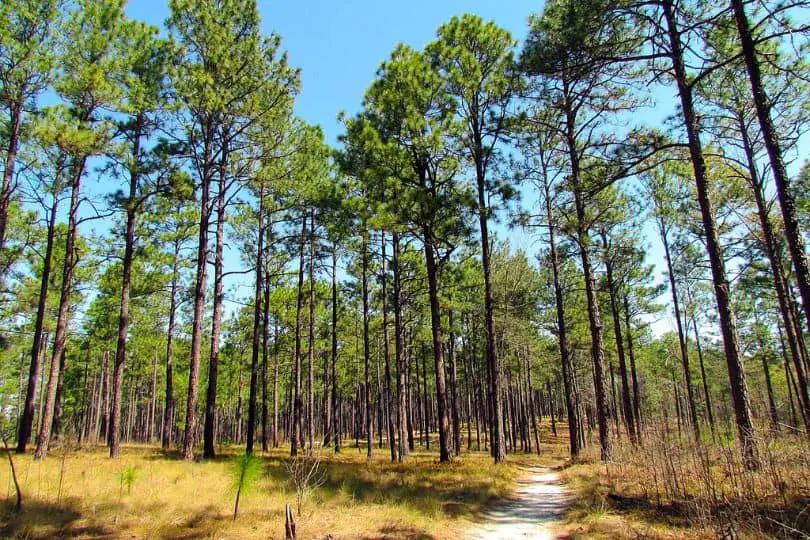
This tall, straight-trunked tree known as the Longleaf Pine (Pinus palustris Mill) can be found in a wide range of environments, from moist, poorly drained flatwoods to dry, well-drained dunes.
The flowers of Longleaf Pine are male clusters that are yellowish-red and elongated in shape, while the female flowers are oval and purple.
It has green needles that are anywhere from 8 inches to 15 inches in length and grow in groups of three. One of its most defining characteristics is its candles, which are enormous, white, glossy buds.
In their second year, the cones’ 6- to 10-inch-long scales develop sharp points, giving them a spine-like appearance. Longleaf pines have scaly bark that gradually separates into enormous plates covered in thin scales as the tree ages.
Historically, Longleaf Pine was largely utilized for the manufacturing of naval stores, but it now has a wide variety of commercial uses, including timber and plywood.
Animals love the seeds, and the critically endangered red-cockaded woodpecker builds its nests in the matured trees. So, if you can grow this tree you may spot the endangered woodpecker and be a part of its conservation.
5. Table Mountain Pine
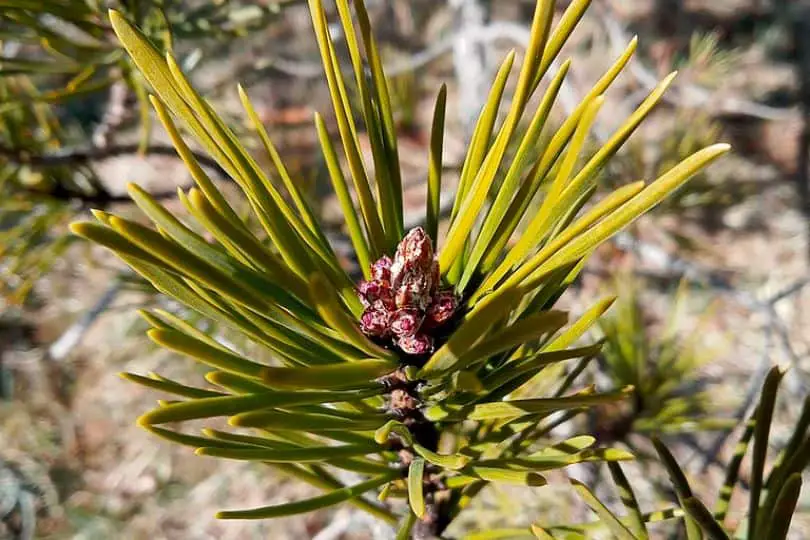
Another Pine variety, Table Mountain Pine is a short and slow-growing tree that can reach mature heights of 30-40ft with a 1ft diameter trunk. They are commonly found in arid, stony slopes that face southwest regions.
It has a straight trunk that supports the uneven crown. Needles are rigid and twisted, ranging in length from 1.5 to 2.5 inches, and have a deep bluish-green coloration while branches are thick and can be found tangled on rocky ridges.
Male blossoms range from yellow to purple and form clusters at the branch tips, while female flowers are green to pale purple and also appear in groups. The cones, which can be anywhere from 2.50 to 3 inches in length, are a tan to a light brown hue and are armed with thick, hooked spines.
Bark has small, irregular, dark brown scales with a reddish undertone. The twigs are orange-brown and somewhat thick and strong, and the buds are narrowly egg-shaped and light brown and frequently sticky.
Table Mountain Pine is commercially valued for its wood, which is light, soft, resinous, and coarse-grained, and is used for rough lumber, pulpwood, and fuelwood. Since it can survive and even thrive in harsher conditions, its presence is employed to mitigate soil erosion and water runoff.
6. Chinaberry
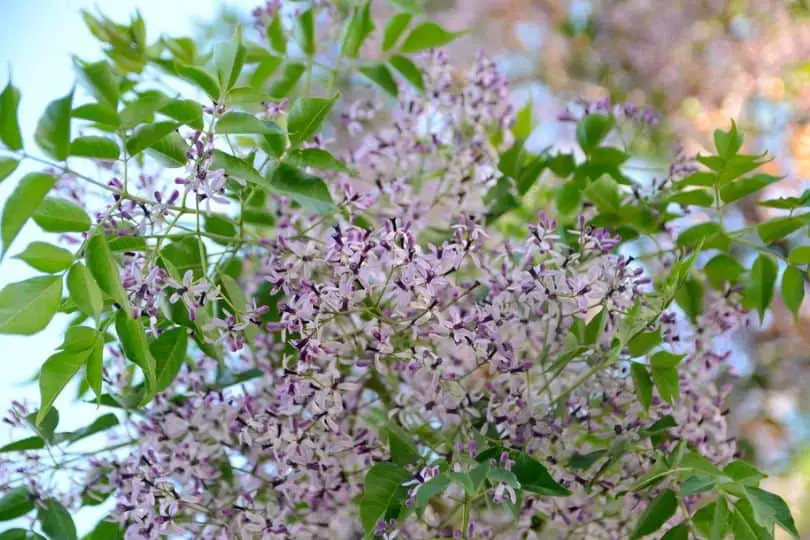
Short and bushy, the Chinaberry tree is also known as the Pride of India tree, the Persian lilac tree, and the Bead Tree. This tree can reach up to 40 feet in height and 1 foot in diameter pretty easily.
It grows naturally along roadways, forest fringes, fence rows, and abandoned lots.
The leaves can be either simple or compound, ranging in length from 10 to 22 inches. Each of the leaflets is almost the same width and length, measuring 1 to 2 inches and glossy green on top and smooth on the reverse.
The purple flowers that bloom from this tree are half an inch to an inch large, yet they emerge in long, drooping clusters. The fruit, which may reach a diameter of up to three-quarters of an inch, is round, yellowish brown, and berry-like. It ripens in the fall and stays on the plant throughout the winter.
Very thick and olive-brown to brown twigs with many lighter pores contrast with the bark’s dark brown to reddish brown crisscrossing furrows. Unlike the thin, spherical, and fuzzy buds, the leaf scar is big and three-lobed.
Even though chinaberry is growing as an ornamental tree for more than 100 years, they are considered to be invasive. Wherever it is planted, they form dense colonies from its roots and won’t let nearby trees thrive.
Also, keep in mind that the fruit of the Chinaberry tree is poisonous to humans and animals. Various extracts from the fruit and leaves of this tree are used as natural pesticides.
Similar Articles
- 14 Common Native Oak Trees In Virginia
- 5 Common Native Maple Trees In Virginia
- 4 Common native Hickory Trees In Virginia
- 3 Common Cedar Trees In Virginia
- 3 Common Birch Trees In Virginia
- 8 Native Pine Trees In Virginia
- 9 Common Nut Trees In Virginia
- 3 Native Elm Trees In Virginia
- 2 Native Ash Trees In Virginia
- 7 Native Evergreen Trees In Virginia
- 8 Native Flowering Trees In Virginia
- 2 Common Locust Trees In Virginia
- Common Palm Trees In Virginia
- 6 Pink Flowering Trees In Virginia
Purple Trees In Virginia – Frequently Asked Questions (FAQs)
Here are some of the most frequently asked questions about purple trees in Virginia.
What are the purple trees along I 81 in Virginia?
Eastern Redbud is the purple flower tree along I 81 Virginia. It is a highly ornamental tree native to Virginia.
Which trees have purple leaves in Virginia during fall?
Not many native Virginia trees have purple leaves in fall. However, some varieties of Sweetgum Trees exhibit purple leaves along with red, orange, and golden yellow shades on the same tree. Additionally, purple-leaf plum is quite common in Virginia backyards. But this tree is native to Southeast Europe, Asia, and the Himalayas.
Sources
The Regional Gardening team ensures the credibility of the information presented in our articles by exclusively utilizing sources of a reputable nature. These sources include peer-reviewed journals published in esteemed universities and scientific research institutions.


